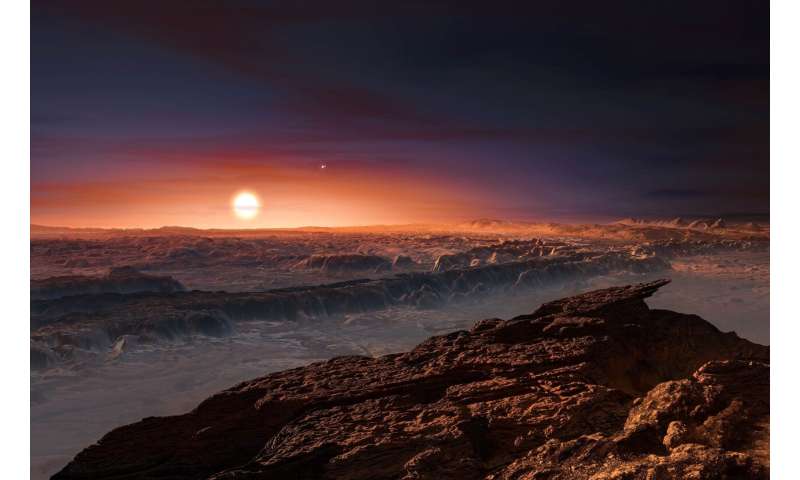ESPRESSO Confirms Presence of an 'Earth' Around Nearest Starhttps://phys.org/news/2020-05-espresso-presence-earth-nearest-star.html
The existence of a planet the size of Earth around the closest star in the solar system,
Proxima Centauri, has been confirmed by an international team of scientists including researchers from the University of Geneva (UNIGE). The results, published in
Astronomy & Astrophysics, reveal that the planet in question, Proxima b, has a mass of 1.17 Earth masses and is located in the habitable zone of its star, which it orbits in 11.2 days.
This breakthrough was possible thanks to radial velocity measurements of unprecedented precision using ESPRESSO, the Swiss-manufactured spectrograph, the most accurate currently in operation, which is installed on the Very Large Telescope in Chile.
The ESPRESSO spectrograph has performed radial velocity measurements on the star Proxima Centauri, which is only 4.2 light-years from the sun, with an accuracy of 30 centimetres a second (cm/s), about three times more precision than that obtained with HARPS, the same type of instrument but from the previous generation.
The measurements performed by ESPRESSO have clarified that the minimum mass of Proxima b is 1.17 earth masses (the previous estimate was 1.3) and that it orbits around its star in only 11.2 days.
... Although Proxima b is an ideal candidate for biomarker research, there is still a long way to go before we can suggest that life has been able to develop on its surface. In fact, the Proxima star is an active red dwarf that bombards its planet with X rays, receiving about 400 times more than the Earth.
... The team has also found evidence of a second signal in the data, without being able to establish the definitive cause behind it. "If the signal was planetary in origin, this potential other planet accompanying Proxima b would have a mass less than one third of the mass of the Earth. It would then be the smallest planet ever measured using the radial velocity method," says Professor Pepe.
Revisiting Proxima with ESPRESSO, arXiv:2005.12114 [astro-ph.EP]
https://arxiv.org/abs/2005.12114v1
